Learning how to propagate a Christmas cactus is easy and fun. I’ve put together this article plus a video to show you how!
A quick note: In North America, and especially the United States, most people refer to this plant as “Christmas cactus.” There is also a variety called ‘Thanksgiving cactus’. The leaves are slightly different, as is the blooming time (November vs. December for most areas of North America.) Because so many people refer to all of these plants as “Christmas cactus” that is the term I will use. However, my pictures may reflect either the Thanksgiving bloomer or the Christmas one. Let’s just call them “Holiday” cacti!
How to Propagate Christmas Cactus
Christmas cactus (Schlumbergera bridgesii) offers house plant lovers a long-lived plant that blooms profusely every year. Propagation by cutting enables the Christmas cactus owner to spread the holiday joy by growing multiple cuttings easily. Within a year of starting two little segments that had fallen off of the parent plant, I had blooms. Talk about a happy plant!
If you’d prefer the instructions to propagate Christmas cactus as a video, I’ve created a little video, here, that walks you through the steps:
Steps to Propagate a Christmas Cactus or Thanksgiving Cactus
You’ll need a healthy, mature plant like these to start with plus a clean pot and some bagged potting soil (house plant soil from the garden center). You will also need a clear plastic bag. The kind that you get when you buy produce at the grocery store is fine. Other things you will need are an X-acto knife or a sharp pair of scissors.
9 Easy Steps to Propagate a Christmas Cactus
- Fill the pot with clean soil.
- Find a segment on the parent plant that has at least 2-3 jointed “leaves”. A bit of roots are great to have, but not necessary. The aerial root parts look like fine white hairs (my pictures below show you what I mean).
- Use the knife or scissors to cut the segment off.
- Place the segment on a paper towel for a few hours. Let it dry out a bit.
- Insert the cut end of the segment – the part with the little root hairs – into the soil. I used a pencil and made a dip about 1/4 inch into the soil and buried the segment halfway up the first flat leaf. There is a picture below of the rooted plant which shows you how deeply I buried the segment.
- Water the cutting well. Place the plastic bag over it to make a little tent.
- Place the bagged pot in a brightly lit place.
- Check daily to make sure it remains moist but not sopping wet.
- You’ll know your plant has rooted when you see the tips starting to grow. They turn red first then grow a new segment.
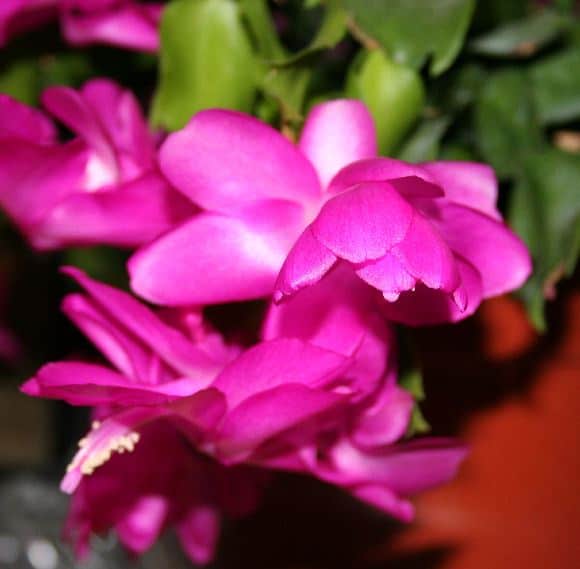
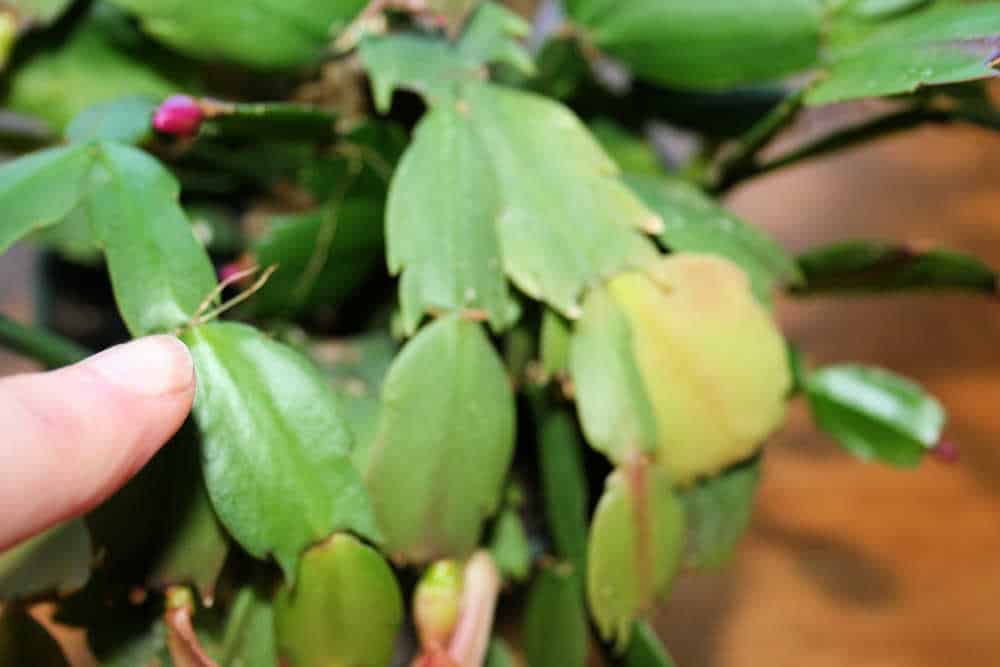
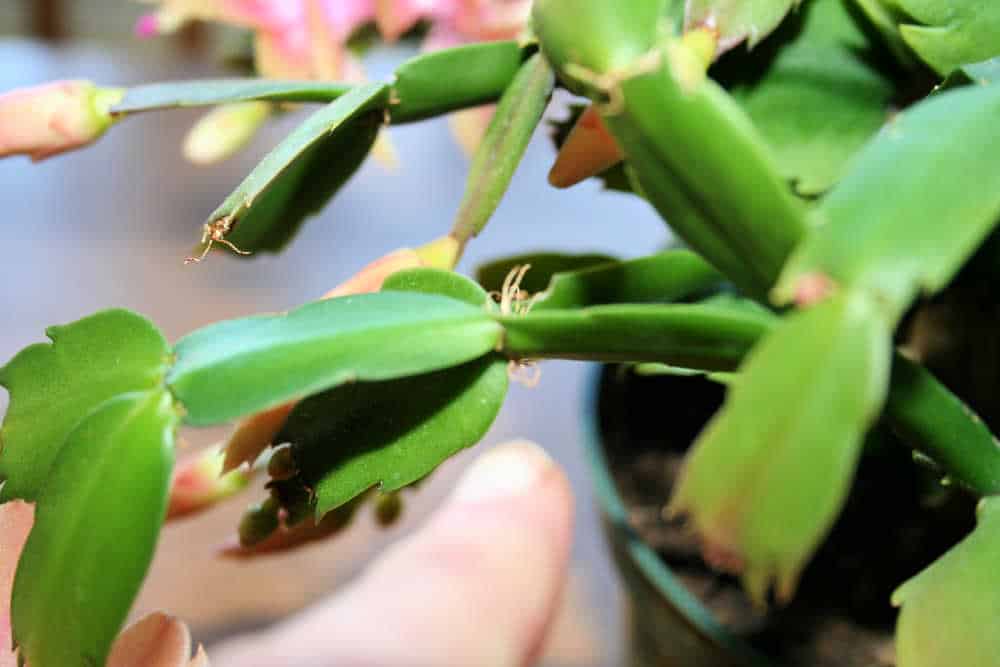
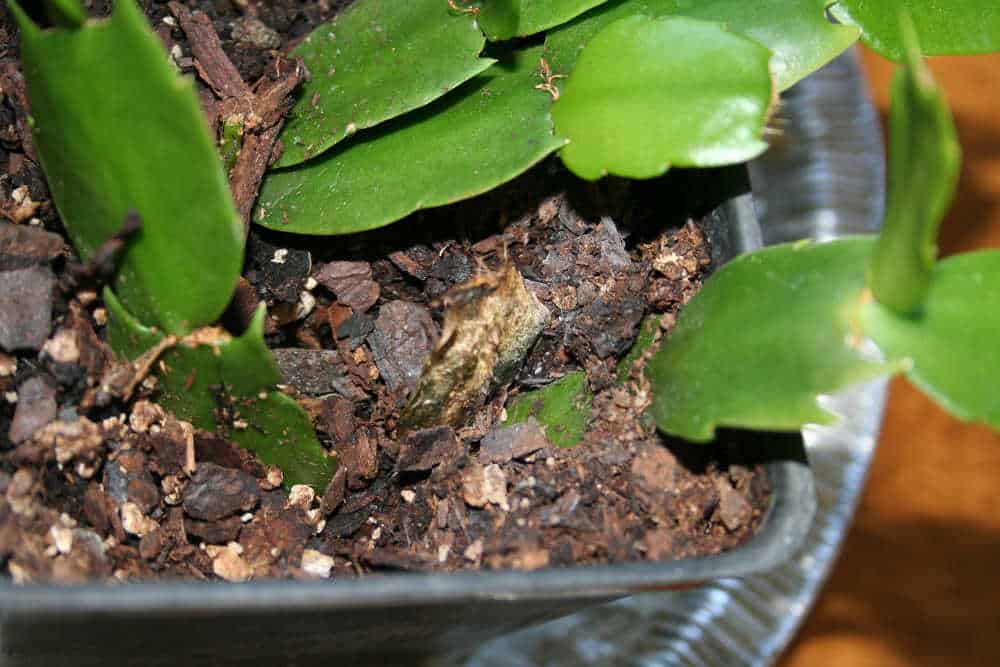
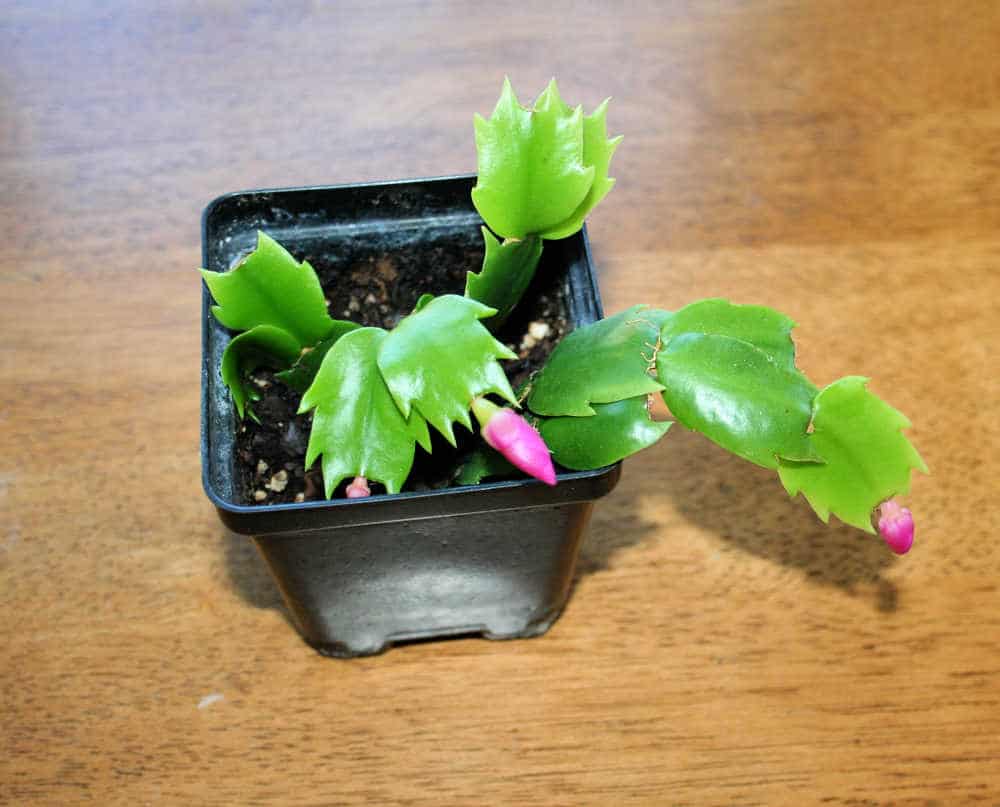





[…] year-round. Flower colors include white, pink, magenta, red and peach colors, and they are easily propagated by taking a cutting and using some root hormone and potting soil. New plants should be the same […]